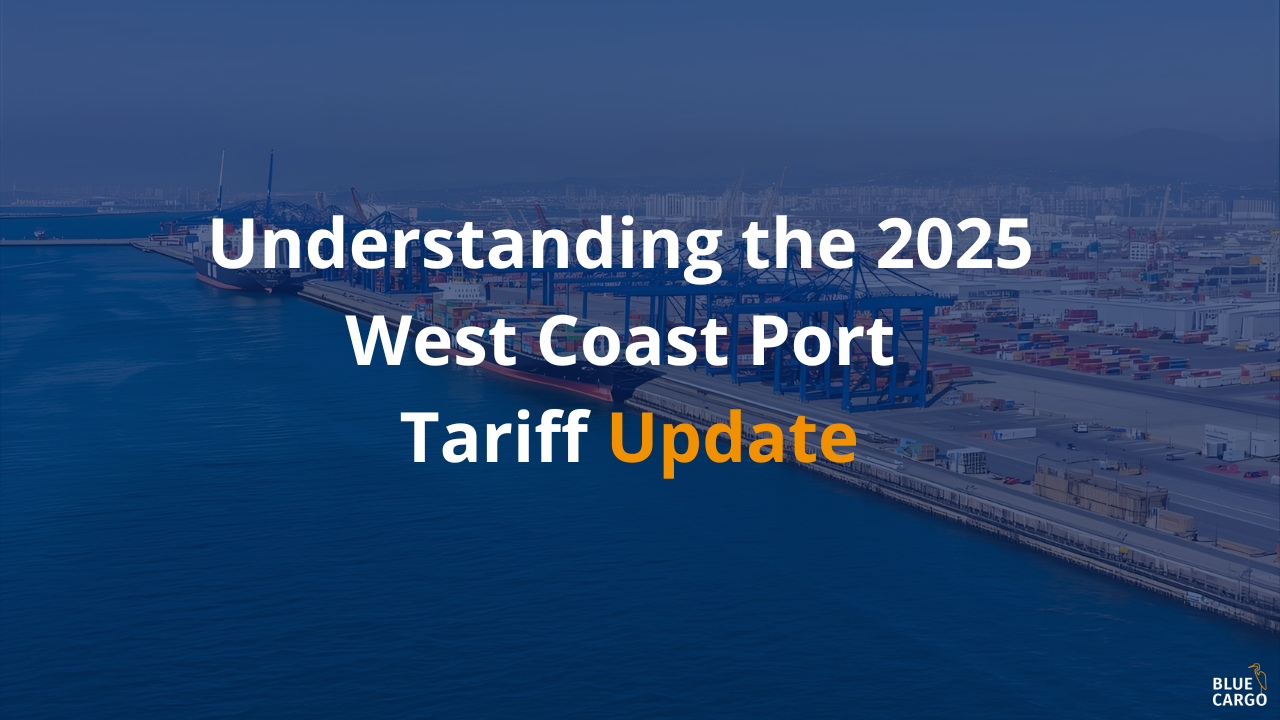
Beginning November 1, 2025, the Port of Long Beach will implement an updated terminal tariff that revises rates, storage timelines, and surcharges.
These updates affect how long containers can remain on terminal grounds, how storage is billed, and which cost items may appear on carrier or logistics invoices.
The changes reflect a broader regional effort to align port operations with rising infrastructure, labor, and sustainability costs across the West Coast gateway system. For importers, exporters, and transportation providers, understanding these adjustments is key to maintaining cost accuracy and avoiding billing surprises through 2026.
Updated Free Time Rules for Imports and Exports
The new tariff revises how long containers can stay before storage charges apply.
- Imports: 4 calendar days free (previously 5)
- Exports: 5 calendar days free (previously 6)
- Empty Containers: 7 calendar days free
Free time now runs on calendar days, including weekends and holidays.
Why it matters:
Delays that overlap weekends can lead to earlier storage charges. Importers, exporters, and drayage operators may need tighter coordination to avoid additional costs.
Storage Costs After Free Time
Once free time expires, daily storage charges apply according to the following tiers:
Dry Containers
- Days 1–5: $56.00 per day
- Days 6–10: $84.00 per day
- Over 10 days: $112.00 per day
Refrigerated Containers (Reefers)
- Days 1–5: $112.00 per day
- Days 6–10: $168.00 per day
- Over 10 days: $224.00 per day
These rates are based on calendar days and include weekends and holidays.
Tip for logistics teams:
Review carrier invoices closely after November 1. Ensure storage fees are billed according to the new published structure and not applied prematurely.
Wharfage and Handling
Wharfage applies to all containers moving through the terminal, including import, export, and domestic cargo.
The updated rates are:
- $9.27 per 20-foot container
- $18.54 per 40-foot container
Gate Operations and Appointments
Terminal gate hours remain Monday through Saturday, 07:00 to 17:00.
Container pick-ups and deliveries require an appointment.
Missed or late appointments incur a $65 fee per occurrence.
For transportation companies:
Early coordination remains key. Missed appointments or unplanned weekend closures can add up quickly under the new storage rules.
Environmental and Security Fees
Two surcharges now apply to all containers handled at the port:
- Environmental Compliance Fee: $7.50 per container
- Security Fee: $6.00 per container
These charges support sustainability and security investments, including terminal electrification and facility upgrades.
Reefer and Hazardous Cargo
- Reefer Plug-In Fee: $85.00 per day (for power service)
- Hazardous Cargo Handling Fee: $180.00 per container
Both are billed per container and appear as separate items on invoices.
Documentation and Dispute Rules
- Electronic Data Submission Fee: $15.00 per Bill of Lading
- Disputes: Must be submitted in writing within 10 business days of invoice receipt.
Regional Context: Related Port Cost Updates
Other port fee adjustments across the San Pedro Bay complex in 2025 may influence overall shipping costs.
Traffic Mitigation Fee (TMF):
As of August 1, 2025, the TMF at both the Ports of Los Angeles and Long Beach increased by 2.84%.
-> New rates: $38.78 per TEU and $77.56 for all other container sizes.
Port of Los Angeles Demurrage:
Effective March 3, 2025, the Port of Los Angeles updated its demurrage rates, raising daily charges significantly after the initial five days.
Although each port maintains its own tariff, these changes indicate a general regional shift toward higher terminal and storage costs.
What This Means for Your Business
For Shippers (Importers and Exporters)
- Plan for shorter free-time windows and tiered storage costs.
- Expect updates to terminal handling charges (THC) or destination delivery fees on invoices.
- Verify that new tariff rates are applied only after the effective date.
For Transportation and Drayage Providers
- Schedule container movements within the new timeframes.
- Confirm gate appointments early to avoid the $65 missed-appointment fee.
- Communicate proactively with shippers about container status and pickup timing.
For Carriers and NVOCCs
- Review all-in rate structures and pass-through policies for THC adjustments.
- Communicate tariff-based cost changes clearly to BCOs during contract renewals.
Final Note
The Port of Long Beach Tariff No. 4, effective November 1, 2025, introduces updated cost structures that reflect current terminal operations, environmental goals, and regional economic pressures.
These updates are part of a larger West Coast effort to modernize port infrastructure and balance rising operational costs.
Staying informed and auditing invoices against published tariff rates ensures that cost changes remain accurate, expected, and transparent.
For shippers and logistics partners, maintaining this visibility will be essential for keeping freight budgets stable into 2026.
----
If you need clarification or need a deep understanding on the implications for your landed costs, contact us.
contact@bluecargo.io


